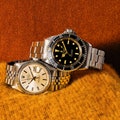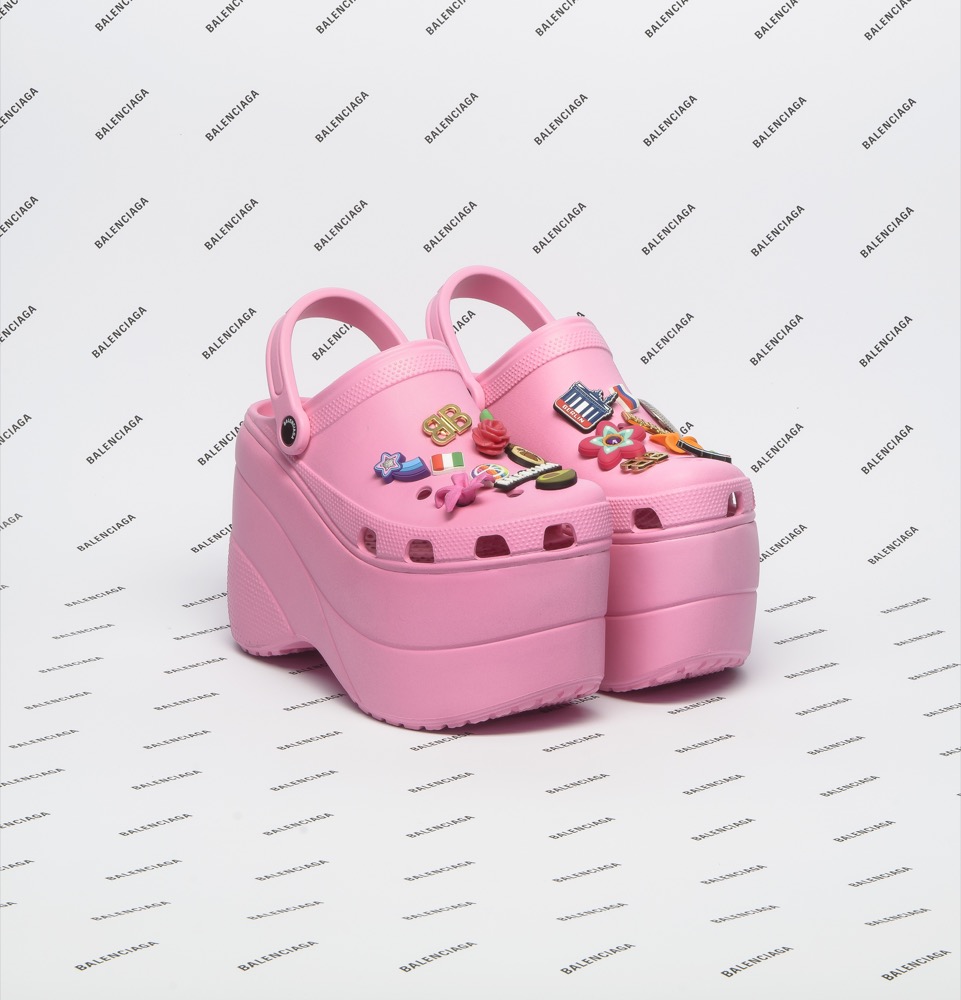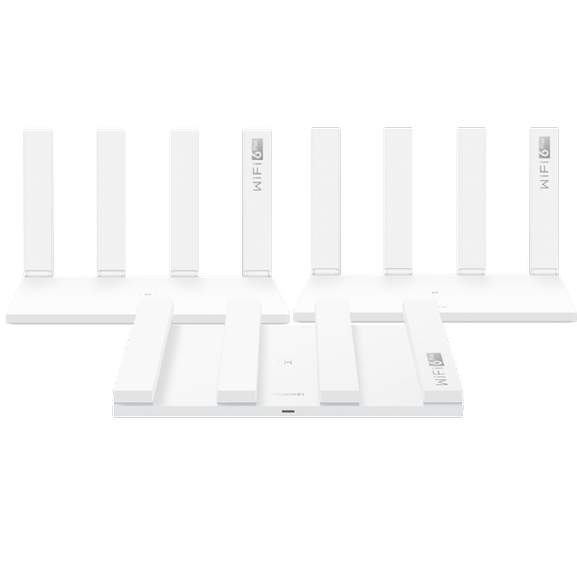How to Buy Your Next Watch

We're in the middle of a genuine, internet-fueled watch craze. But even if you're already wrist-deep, buy the watch is overwhelming by design. So we enlisted a bunch of experts to cut through the noise—and help you find the right piece at the right price.
The Six Steps to Vintage-Watch Nirvana
“People think that vintage watches are harder to get or more expensive than contemporary watches,” says Jacek Kozubek, a vintage dealer in San Francisco. Which is fair! Paul Newman's Rolex sold for nearly $18 million in 2017. “But in some cases, they're actually easier.” If you're looking for a first watch, it's tough to find something cooler—or more likely to double in value—than vintage. Here's what you need to know. —Sam Schube
1. Start with a Name…
The vintage world is unfathomably deep, but per Kozubek, lots of journeys can start at the same place: “There's amazing Rolex Datejusts between $2,500 and $3,500. They're classic. People are tired of bigger watches, and the 36-millimeter size [of the Datejust] has been trending upwards.”
2. …and Then Add a Number
“In our world, people don't say ‘Datejust’ or ‘Submariner,’ ” Kozubek says. “When you want to be more specific, you say the reference number, because everything is searchable online with it.” (If you plug his favorite Datejust references—1601 and 1603—into Instagram as hashtags, you'll find lots of examples…and potential sellers.)
3. Twist the Dial
An old black dial that the sun's turned chocolate-bar brown isn't a defect—it's “tropical,” and now worth multiples. If you're just getting into the game, you're probably not going tropical, but pay attention. “The weirder the dial is,” Kozubek says, “the less they made of them”—and the more valuable they are.
4. Unbox It
The most pedigreed pieces come with their original box and papers. But “back in the day,” Kozubek says, “only neurotic people kept the box and papers. So forget that: It will create a constraint and make you compromise on quality or price.”
5. Look for Turnover
You wouldn't buy groceries from a store that never gets fresh deliveries, right? Apply the same logic to watches: “Look at a website for a while. If a month later, it's all the same, don't buy. That's not a store, it's a museum.”
6. If It Feels Too Good to Be True…It Is
“This is a very fucking important point: If you feel uncomfortable, step away,” Kozubek says. And when in doubt, buy from a reputable dealer—even if it costs you a few bucks more.
Watches with heritage, like the pilot’s IWC, moon-visiting Omega, and diver’s Tudor here, are reasonably priced, work with a suit and a hoodie, and won’t ever go out of style.
From top: Omega Speedmaster, $5,350 / IWC Schaffhausen Spitfire, $4,900 / Tudor Black Bay, $3,800
Want a New Watch? Try On 10
If you've already got a vintage watch—or just want to beat up a new one for future generations—do some web research and hightail it to a multibrand shop. (“Multibrand” refers to a store that stocks lots of different makers; your local Rolex boutique is an “authorized dealer.”) Reason one: You can try on a whole bunch of watches from different companies. “At the end of the day, nothing beats coming in and trying on the watch yourself,” says Watches of Switzerland exec David Hurley. “You've got to put it on your wrist and decide whether it's for you or not.” Reason two: The salespeople at multibrands know that it's their job to ask the questions, says Ruediger Albers of New York City watch haven Wempe USA. “Are you a sports guy? Do you plan on buying more watches? We can tailor a collection around that.” Most importantly, Hurley says, a multibrand makes the process fun, not anxiety-inducing: “If you're getting talked down to, you're in the wrong location.” —S.S.
Circa 1971 Seiko 6139 “Pogue”, $850, from Wind Vintage
How I Found My Brand
Jeremy Kirkland, host of the podcast Blamo!, found that the greatest joy in buying a watch comes from finding a watchmaker that speaks to you.
I started learning about watches on old message boards, where I could ask questions without being laughed at. I started to get really into Rolex—but in your early 20s, it doesn't make sense to wear a watch that costs more than what you're making in a year. Online, I learned that the great equalizer was Seiko, which had unbelievable design and craftsmanship and was really affordable. My first was called the Big Orange Monster: It's an oversize diving watch with an orange dial. (That's a great thing about Seikos—the names are ridiculous.) You could find them for a couple of hundred bucks, and they're freakin' gorgeous. Eventually, I got a Rolex. But Seikos have been the nearest and dearest to my heart: They're how I got into watches, and they're the most fun to collect.
To this day I tell everyone that one of the greatest watches in history is a Seiko 6139—it's nicknamed the Pogue, after William Pogue, the astronaut who wore it in Skylab. Watches that have gone to space are superhot, but I got my Pogue for around $300. When I bought it, I realized that I was deeper into watches than I'd ever been, and I still didn't need to work at a hedge fund. And weirdly, more people ask about my Pogue than any other watch I've owned. —As told to S.S.
From top: Urban Jürgensen One, $26,950 / Ressence Type 3, $42,200, from Mr Porter / Nomos Glashütte Tangente, $2,030
Three Very Different Reasons to Go Indie
You don't need to buy from a true-blue Swiss brand to get a best-in-class watch. These not-quite-household-name independent brands—old and new, highest-end and more affordable—are making pieces we can't stop coveting. —Samuel HineThe Danes at Urban Jürgensen have been making refined, sleek watches since 1773—and a righteous steel sport style since last year.
Ressence—founded by an industrial designer with no prior watchmaking experience—makes analog watches that nonetheless look straight out of a lab in Cupertino. (The smartwatch effect is achieved by filling the case with—yep—oil.)
Two reasons Nomos has become the gateway brand for a generation of watch nerds: The brand makes everything by hand but sells its Bauhaus-inflected goods—like this two-grand Tangente—for non-handmade prices.
This Sea-Dweller started life in silver. And while MAD’s most popular treatment is the full blackout, the company will do everything from camo to imitation marble.
MAD Paris-modified Rolex Sea-Dweller, $37,750, from Dover Street Market New York
When Your First Question Is “Does It Come in Black?”
The world's hottest watches—your Pateks, your APs, your Rolexes—are mostly 20th-century designs. But that doesn't mean they're immune from the wave of personalization that's taken over the rest of the menswear world this century. Just check the wrists of the high-fashion movers and shakers who employ the Wonka-grade customizers of MAD Paris to give them something nobody else has. When Virgil Abloh wants his Patek Philippe Nautilus to look like the Batmobile, he calls in MAD to deploy its “ionic pulverization” process. When Alyx designer Matthew Williams decided to remake Audemars Piguet's iconic Royal Oak in his label's signature industrial steel, he enlisted MAD. It's a reminder that no matter how rare, a watch straight from the factory is still a watch—and ultimately we buy watches to stand out, not to fit in. “When you go to dinner with your friends,” a MAD employee says, and everyone is wearing the same watch, “it looks weird.” —Cam Wolf
From top: 1975 Audemars Piguet Royal Oak 5402ST A-Series, $105,000 / Circa 1961 Rolex GMT-Master 1675, “Pepsi” with tropical dial, $145,000 / Circa 1966 Enicar Sherpa Ultradive, $3,900 / All from Wind Vintage
How to Get Rich Collecting Watches
The end of the world drives some men to build bunkers, but it drives others straight to the watch shop. Wind Vintage's Eric Wind serves a few clients, he says, “who are quite concerned about global apocalyptic scenarios. They will buy watches and place them in safe-deposit boxes around the world in case they need to flee a given country.”
But you don't have to be a watch-obsessed prepper to invest in timepieces. Over the past decade or two, watches have transformed into a genuine asset class. Pick the right ones, and they'll appreciate in value like blue-chip stocks—but those gains aren't taxable, and you can wear them on your wrist. A company like The Watch Fund lets you invest in a fund backed entirely by timepieces: As the founders buy and sell rare watches, you reap the rewards. Wind's most successful path to making bank on watches, meanwhile, involves breaking your buying into tiers, focusing up to half of your cash on a super-primo piece. Over the past decade, for example, auction results for some Patek 3700/1s have leapt from nearly $30,000 to $150,000—a rate double the growth of the S&P 500 over that period. The rest of the investment goes into midsize bets, like the safe-as-hell Rolex Submariner: A late-'60s 5513 model sold for $5,000 at Christie's in 2010—and another for more than 20 grand last year. —C.W.
Put half your investment into one can't-miss piece, like this Royal Oak, which Wind calls a “blue-chip S&P 500 stock.”
This Rolex was made for old-school pilots. Today iconic watches with great backstories—and perfectly faded dials—make excellent midrange bets.
With the rest, go exotic: a watch from under-the-radar Enicar or a Rolex just below grail status, like the Explorer.
From top: A. Lange & Söhne 1815, $24,800 / Jaeger-LeCoultre Reverso Classic Large Duoface Small Seconds, $19,400 / Grand Seiko SBGY002, $25,000 / Breguet Classique 5177BB, $23,700 / Cartier Tank Solo, $5,200
The Quiet Glory of the Dress Watch
There are plenty of factors that have influenced the current boom in practical steel sport watches (James Bond, gold futures), but cost per wear is a big one: If you're going to buy a watch that costs the same amount of money as a used Camry, you'll want to wear it every day, right? And as dress codes have loosened, it's now easier to wear a steel piece than a leather-strapped dress one. But even in 2020, you'd be wrong to sleep on ultra-slick dress watches, which—with their smaller precious-metal cases, simpler faces, and fine-leather bands—are built to slip under the shirtsleeve and fly under the radar. They are confident timepieces, and wearing one daily carries an implication: that you value elegance over endurance. And perhaps that you—like Andy Warhol and Kanye West, dress-watch fans both—are rich enough to ding up a piece of gold and alligator on your way to the gym.—S.H.
Want a Dream Watch? Learn to Be a Dream Customer
If you've spent even half an hour researching watches, you'll learn that there are a handful of pieces everybody wants—like, say, Rolex's deeply covetable, Paul Newman-endorsed Daytonas—but that you can't necessarily walk into a store and just buy. “We want to make everybody happy, but the numbers don't allow that—there's not enough to go around,” says Wempe's Ruediger Albers. So, he says, “we sell them to customers that are otherwise helping us build the business.” That sounds depressing, but it doesn't mean he's holding watches back just for his deepest-pocketed clients: “We have customers that bring us five of their friends and get to the holy grail that way.” Good things take time. Find a salesperson you like and let them know where you'd like to wind up. And you're gonna want to bring a fruitcake to the watch shop's Christmas party too. —S.S.
This is called the World Time for a reason: When you land in a new city, hit the button on the side of the case to cycle through time zones. Now you’ve got the hour in London—and everywhere else.
Patek Philippe 5230G “World Time”, $48,537
True (Watch) Love Waits
In the watch world, we often hear about epic waiting lists: five years for a steel Rolex Daytona or eight for a Patek Nautilus. Some enviable watch ninjas are able to jump to the front of the line. But we wondered: Who are the guys who just put their names on the list and actually…wait?
Meet Russell. Russell, who works in publishing, couldn't just walk into a store and buy his dream watch—a Patek Philippe 5131R-011 World Time, a rose-gold variation of the piece above. So he walked into his local dealer, put his name on the list, and then waited 2,922 days—or eight years—to collect his bounty. “I'm happy to wait for anything if I think it's worth it,” Russell told me.
Multiyear waits like Russell's are the natural result of an increasingly sky-high demand for handcrafted pieces that are limited by their very nature. Russell is not an anomaly: Edward, a managing director at an investment bank, waited “just” five years for his Nautilus (a Patek, reference 5711) with a Tiffany-stamped dial.
Starting the countdown on your own grail watch is as simple as showing up and announcing your interest. Climbing the wait list is the hard part. Russell and Edward would attend their respective stores' events, stop in to chat with the staff, or simply wave hello through the window. Edward described his strategy as “pleasantly persistent.” Every few months he'd check in. “And we'd all laugh, and they'd tell me, ‘One day.’ ”
Until that day arrives, it helps to keep yourself busy. Edward credits his job, wife, and “two beautiful daughters” with helping him bear the wait. Russell employed a slightly different strategy. “I ordered the watch in 2008,” he says, “and then probably bought three Ferraris over the next few years.” —C.W.
A version of this story originally appeared in the March 2020 issue with the title "How To Buy Your Next Watch."



